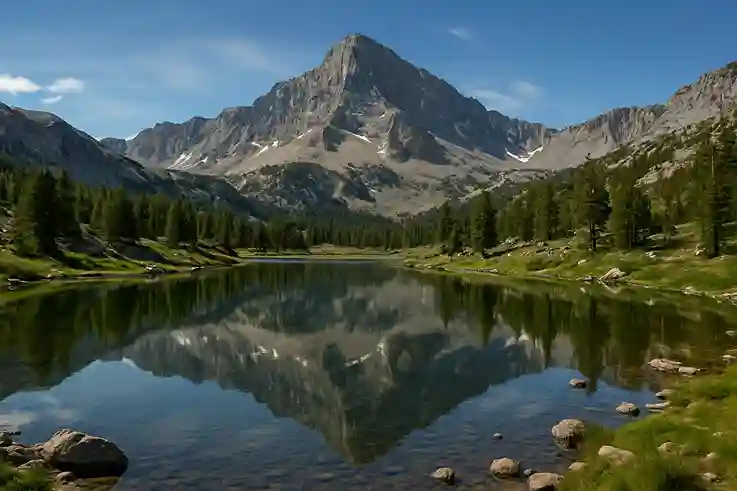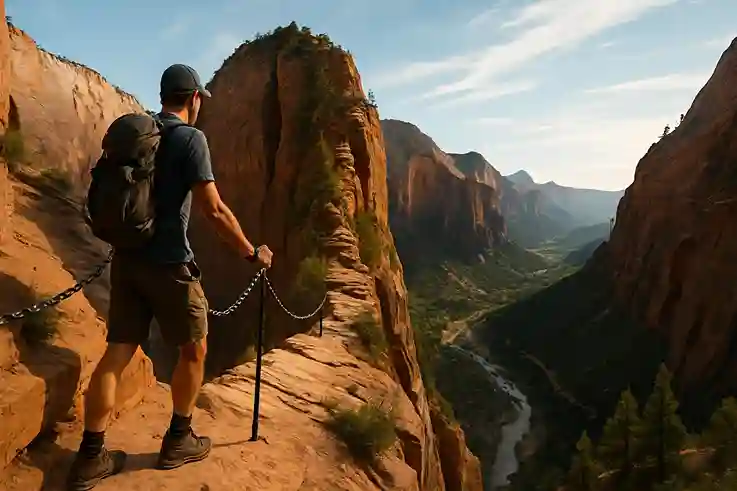Welcome to Great Basin National Park
Great Basin National Park is a hidden gem in the United States, known for its breathtaking variety of landscapes. Towering mountains, ancient trees, and vast desert valleys come together in one unforgettable place. Visitors can explore caves, hike alpine trails, or simply relax under one of the clearest night skies in the country. The park is home to rich wildlife, from mule deer roaming the meadows to owls calling through quiet forests. Whether you seek adventure, discovery, or peace, Great Basin National Park offers something remarkable for every traveler.
In this blog, you will discover:
- The park’s fascinating history and unique natural features.
- Stunning spots you should not miss, from caves to alpine peaks.
- Wildlife encounters and tips for spotting rare species.
- Outdoor adventures, from hiking trails to stargazing nights.
- Hidden gems and travel tips to plan your visit with ease.
A Glimpse of History and Formation
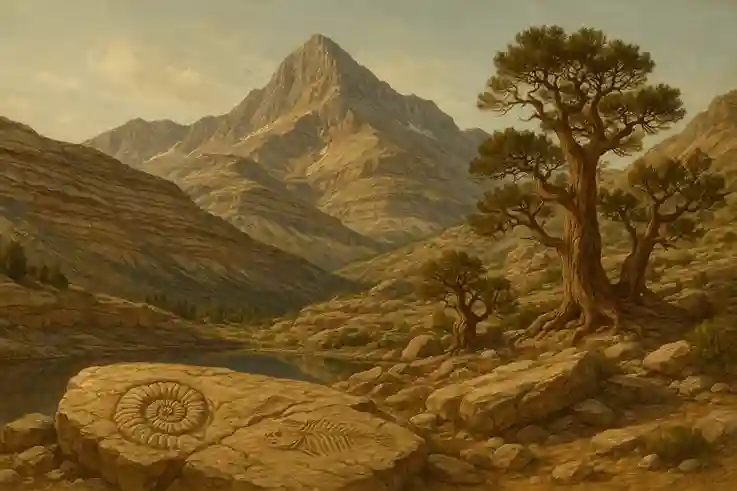
Ancient Landscapes
Great Basin National Park preserves a story written in stone, etched across millions of years. The region’s foundation was shaped by powerful geological forces. Shifting tectonic plates raised rugged mountains that still dominate the skyline today. Glaciers carved valleys and sculpted alpine lakes, leaving behind dramatic marks of the Ice Age. Volcanic activity added layers of ash and rock, creating the diverse terrain seen across the park.
Visitors walking through its trails witness this ancient timeline in every direction. Towering peaks rise sharply against open desert basins, creating a striking contrast of height and space. Deep valleys reveal layers of earth’s history, exposed by wind and water over centuries. Hidden beneath the surface, limestone caves like Lehman Caves showcase intricate formations of stalactites and stalagmites, slowly crafted drop by drop.
This geological variety makes Great Basin National Park a living museum of natural history. Every mountain ridge, glacial scar, and cave chamber offers a glimpse into Earth’s powerful past.
Bristlecone Pines
One of the greatest treasures in Great Basin National Park is the ancient bristlecone pine. These remarkable trees are considered some of the oldest living organisms on Earth. Many have survived for more than 4,000 years, silently witnessing the rise and fall of civilizations.
The trees grow slowly in harsh alpine environments where few other plants can survive. Thin soil, freezing winds, and short growing seasons shape their survival. Instead of weakness, these challenges give the bristlecone pine extraordinary strength and endurance.
Their twisted trunks and gnarled branches reflect centuries of struggle against the elements. Dead wood often remains intact for thousands of years, preserved by the dry climate. Each weathered ring inside the tree records a story of survival through droughts, storms, and changing climates.
Walking among these ancient groves feels like stepping back in time. Visitors often describe a sense of awe, standing next to trees that began life before recorded history. The bristlecone pines remind us of resilience, patience, and the timeless power of nature.
Human History
Long before Great Basin National Park was established, Indigenous peoples called these lands home. Tribes such as the Fremont and Shoshone lived, traveled, and hunted in the region for thousands of years. They relied on the valleys, streams, and forests for food, shelter, and spiritual connection.
Petroglyphs carved into stone walls still stand as silent witnesses of their presence. These ancient markings reveal cultural stories, hunting scenes, and symbolic designs. Artifacts found in the area—tools, pottery, and arrowheads—show how people adapted to the rugged environment.
Centuries later, settlers and explorers arrived, drawn by the promise of land and resources. Ranching, mining, and logging began to shape the valleys and mountains in new ways. Small towns grew around the edges of the Great Basin, leaving their own history layered on top of the ancient one.
The park today protects both natural and cultural heritage. Every trail and cave holds echoes of the people who walked here before, reminding visitors of a deep connection between humans and the landscape.
Must-Visit Scenic Spots in Great Basin National Park
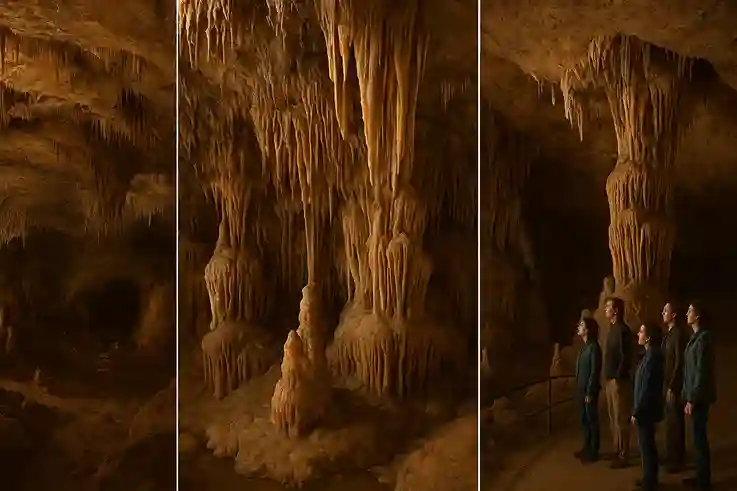
Lehman Caves
Lehman Caves is one of the most fascinating attractions in Great Basin National Park. Hidden beneath the surface, this limestone cave stretches with passages full of intricate formations. Stalactites, stalagmites, and delicate draperies decorate the chambers like natural sculptures. Guided tours allow visitors to walk safely inside and learn about the cave’s history. The cool, quiet atmosphere makes it feel like stepping into another world.
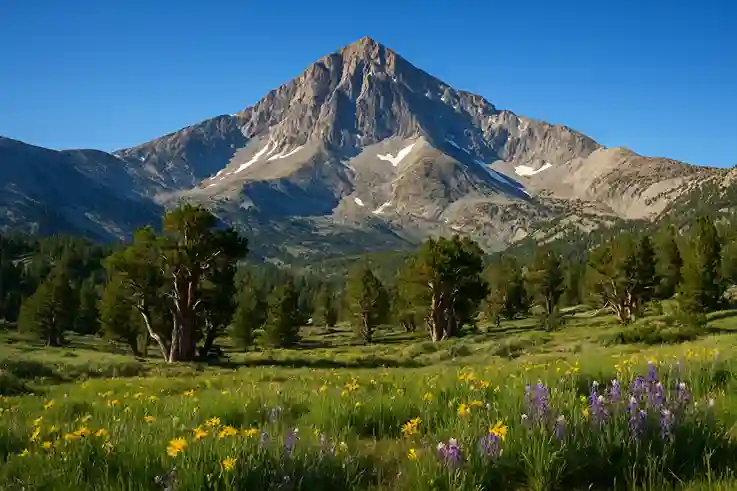
Wheeler Peak
Wheeler Peak rises to 13,063 feet, making it the highest point in Great Basin National Park. The mountain offers hiking trails that wind through alpine forests and wildflower meadows. At the summit, panoramic views extend across desert basins and mountain ranges. Nearby, glaciers once shaped valleys that still hold small, sparkling lakes. Adventurers come for both the challenge and the beauty that Wheeler Peak provides.
Alpine Lakes and Glacial Valleys
The alpine lakes and glacial valleys in Great Basin National Park create peaceful settings for reflection and photography. Stella Lake and Teresa Lake are popular stops along the Wheeler Peak Scenic Drive. Their calm waters mirror the towering peaks above, creating stunning views. Glacial valleys nearby tell the story of Ice Age carving, leaving behind wide, sweeping landscapes. These areas are ideal for hikers seeking serenity and natural beauty.
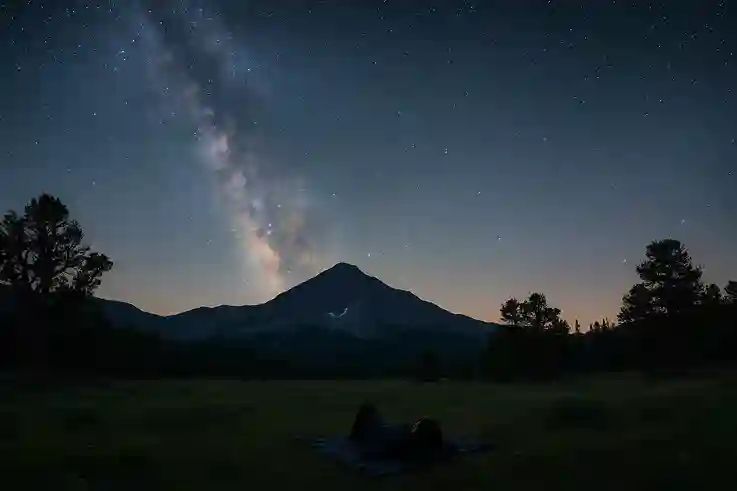
Stargazing Points
Great Basin National Park is famous for its dark, unpolluted skies. At night, the stars appear brighter than almost anywhere else in the United States. Visitors can clearly see the Milky Way stretching across the horizon. Designated stargazing points provide open views for skywatchers and photographers. Each summer, the park hosts astronomy programs where telescopes reveal planets, galaxies, and distant star clusters.
Wildlife Wonders in Great Basin National Park
Great Basin National Park is alive with diverse wildlife. The park’s landscapes, from alpine forests to desert valleys, provide habitats for countless species. Each visit brings the chance to spot animals that define this rugged ecosystem.
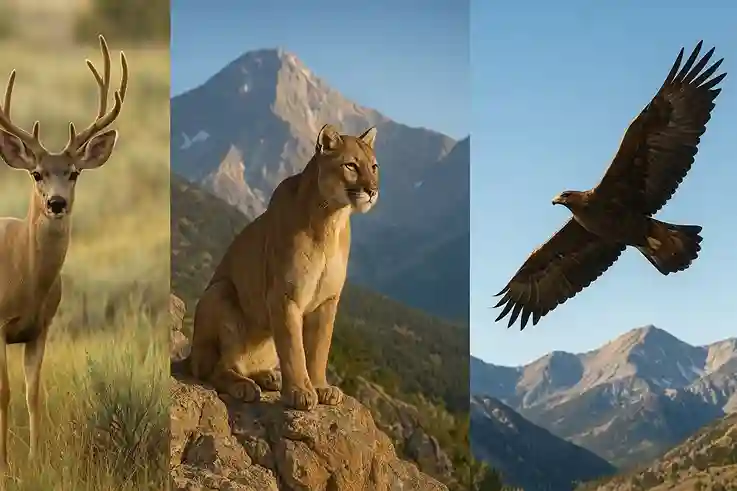
Mule Deer
Mule deer are among the most common sightings in the park. They roam open meadows and forest edges, often grazing in groups. Their large ears, shaped like a mule’s, give them sharp hearing. Visitors should admire them from a distance and avoid feeding, which disrupts natural behavior.
Mountain Lions
Mountain lions, also known as cougars, are rarely seen but live throughout Great Basin National Park. These solitary predators hunt deer and smaller mammals. Spotting one is a rare and unforgettable experience. If encountered, it’s best to remain calm, stand tall, and never run.
Rare Birds
Birdwatchers will find the park especially rewarding. Golden eagles soar high above the peaks, while sage grouse display their unique plumage in valley areas. More than 70 species nest here, making Great Basin a birding haven. Early mornings and quiet observation often provide the best sightings.
Responsible Wildlife Viewing
Wildlife watching is safest and most rewarding when done responsibly. Following a few simple practices ensures that both animals and visitors remain safe.
Keep a Safe Distance
Always admire wildlife from afar. Binoculars or a zoom lens allow you to see details without disturbing animals. Getting too close can stress them or provoke defensive behavior. Safe distances also protect you from unexpected encounters.
Move Quietly and Slowly
Sudden movements or loud noises can startle animals. Approach observation areas with patience, using slow and steady steps. Quiet behavior increases your chances of seeing natural activity, like feeding, nesting, or playful interactions.
Never Feed Wildlife
Feeding animals may seem kind, but it disrupts natural survival instincts. Human food can make them sick or dependent on people. In Great Basin National Park, feeding wildlife is strictly prohibited to protect both animals and visitors.
Respect Natural Habitats
Stay on marked trails and avoid trampling sensitive areas. Many species rely on plants, nesting sites, or burrows that may be hidden from view. Respecting their space keeps ecosystems healthy and balanced.
Protect Yourself Too
Wildlife encounters are unpredictable. Predators like mountain lions or coyotes may react if threatened. Carrying awareness, staying calm, and keeping pets leashed adds an extra layer of safety.
By respecting these guidelines, every visitor helps preserve Great Basin National Park’s delicate balance. In return, you enjoy unforgettable encounters that feel natural and authentic.
Adventure and Outdoor Activities
Great Basin National Park is an outdoor paradise. Its wide landscapes invite adventure in every season. From alpine trails to snowy valleys, the park offers activities for every type of traveler.
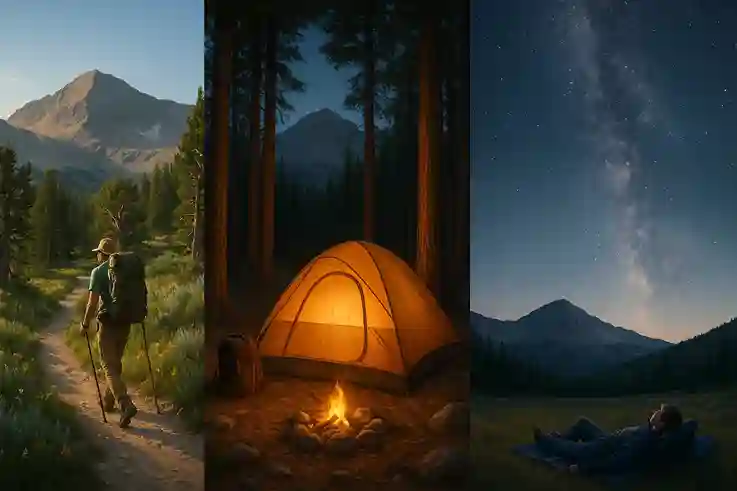
Hiking Trails
Hiking is the most popular activity in Great Basin National Park. Trails range from easy walks to challenging climbs. The Alpine Lakes Loop offers gentle paths with stunning views of Stella and Teresa Lakes. For experienced hikers, the Wheeler Peak Trail leads to breathtaking summit views. Always carry water, wear sturdy boots, and prepare for sudden weather changes.
Camping and Backpacking
Camping is a perfect way to experience the park’s quiet nights. Developed campgrounds offer basic amenities, while backcountry camping provides solitude under the stars. Backpackers can explore remote valleys and high ridges far from the crowds. A permit is required for backcountry trips, and campers should follow Leave No Trace principles to protect the wilderness.
Stargazing Adventures
Few places match the night skies of Great Basin National Park. The park is designated as an International Dark Sky Park, meaning minimal light pollution. Visitors can see the Milky Way, planets, and countless stars. Bring warm clothing, as nights at high elevation can be chilly even in summer.
Seasonal Activities
Each season brings unique opportunities. Winter transforms trails into routes for snowshoeing and cross-country skiing. Spring and summer open streams and lakes for fishing, while fall offers crisp air and colorful foliage. Ranger-led tours run throughout the year, adding expert knowledge to every experience.
Safety Notes
Weather in the Great Basin can change quickly. Carry layers, extra water, and a map for navigation. Cell service is limited in many areas, so plan ahead. Wildlife encounters are rare but possible, so follow safety guidelines and respect their space.
Adventure in Great Basin National Park is both exciting and peaceful. Every trail, campsite, and seasonal activity reveals a new side of this extraordinary landscape.
Hidden Gems and Lesser-Known Spots
Beyond the popular trails and landmarks, Great Basin National Park holds quieter places waiting to be discovered. Exploring these hidden spots offers peace, solitude, and a deeper connection with the landscape.
Secret Trails
Several lesser-known trails provide unforgettable experiences with fewer crowds. The Baker Creek Trail system winds through meadows, streams, and forests where wildlife sightings are common. The Timber Creek Trail, tucked away on the park’s edge, offers a more rugged adventure for hikers seeking solitude. These paths give visitors a chance to enjoy the park’s beauty in silence.
Secluded Viewpoints
While Wheeler Peak and the Alpine Lakes are famous for their views, smaller overlooks can be just as inspiring. Trails branching off the main routes often reveal quiet ridges and hidden valleys. At sunset, these spots glow with warm colors, creating perfect moments for reflection and photography.
Quiet Picnic Areas
Not every adventure needs to be demanding. The park has several quiet picnic areas where visitors can rest and enjoy the scenery. Shaded spots near creeks or alpine clearings provide peaceful breaks from hiking. Bringing a simple meal and pausing in these places turns an ordinary stop into a memorable experience.
Exploring hidden corners of Great Basin National Park encourages visitors to slow down. It shows that beyond the famous caves and peaks, the park’s quiet spaces are just as magical.
Tips for Planning Your Visit
Visiting Great Basin National Park is most rewarding when planned with care. Knowing the best seasons, entry details, and nearby services makes the trip smoother and more enjoyable.
Best Times of Year
Summer and early fall are the most popular seasons to visit. Trails are clear of snow, and nights are perfect for stargazing. Spring brings wildflowers and flowing streams, though some higher trails may remain icy. Winter transforms the park into a quiet, snowy wonderland for snowshoeing and skiing. Each season offers something unique, so timing depends on your interests.
Permits and Entrance Fees
Unlike many national parks, Great Basin National Park does not charge an entrance fee. This makes it an accessible destination for all travelers. However, special activities like cave tours or backcountry camping require permits. Reservations for Lehman Caves tours are highly recommended, especially in summer when demand is high.
Nearby Towns and Services
The closest town to the park is Baker, Nevada, a small community with limited lodging and dining options. For more choices, visitors often stay in Ely, about an hour away, which offers hotels, restaurants, and supplies. Planning ahead is important, as services near the park are limited.
Accommodations and Camping
Inside the park, campgrounds provide a range of experiences, from developed sites with amenities to rustic, remote spots. Lodging is not available within the park itself, so visitors must stay in nearby towns. Booking early during peak season ensures availability.
Travel Advice
Cell service is unreliable in many areas, so maps and GPS devices should be carried. Weather can change quickly at high elevations, so pack layers and prepare for both sun and cold. Carry extra water, as some trails and campgrounds lack reliable sources. With these preparations, your visit to Great Basin National Park will be both safe and memorable.
Great Basin National Park – National Park Service (NPS): This is the park’s official government site, offering up-to-date information on visitor services, alerts, maps, cave tours, and more
FAQs About Great Basin National Park
Conclusion: Great Basin National Park
Great Basin National Park is more than a remote escape—it’s a place where nature tells its story through mountains, caves, and starry skies. From the ancient bristlecone pines to the underground wonders of Lehman Caves, each spot offers a glimpse into a world both timeless and breathtaking.
Whether you’re hiking rugged trails, stargazing in one of the darkest skies in America, or simply pausing to enjoy the silence, the park delivers experiences you’ll carry long after your visit ends. For those seeking beauty off the beaten path, Great Basin truly proves that stunning treasures often lie where we least expect them.
Have you explored Great Basin National Park Nevada?
Share your favorite spots or hidden gems in the comments—I’d love to hear your experiences!

Nick William is a dedicated travel blogger with a passion for uncovering hidden destinations and sharing authentic experiences from around the world. With a background in digital media and storytelling, he has developed a unique style that combines detailed research, vivid descriptions, and personal insights. His goal is to help readers not only plan their journeys but also connect with the culture, people, and stories behind each place.
When Nick isn’t exploring new cities or trekking off-the-beaten paths, he enjoys capturing moments through photography, reading history books, and sipping coffee while drafting his next adventure. His writing brings destinations to life, making every reader feel like a fellow traveler on the journey.
